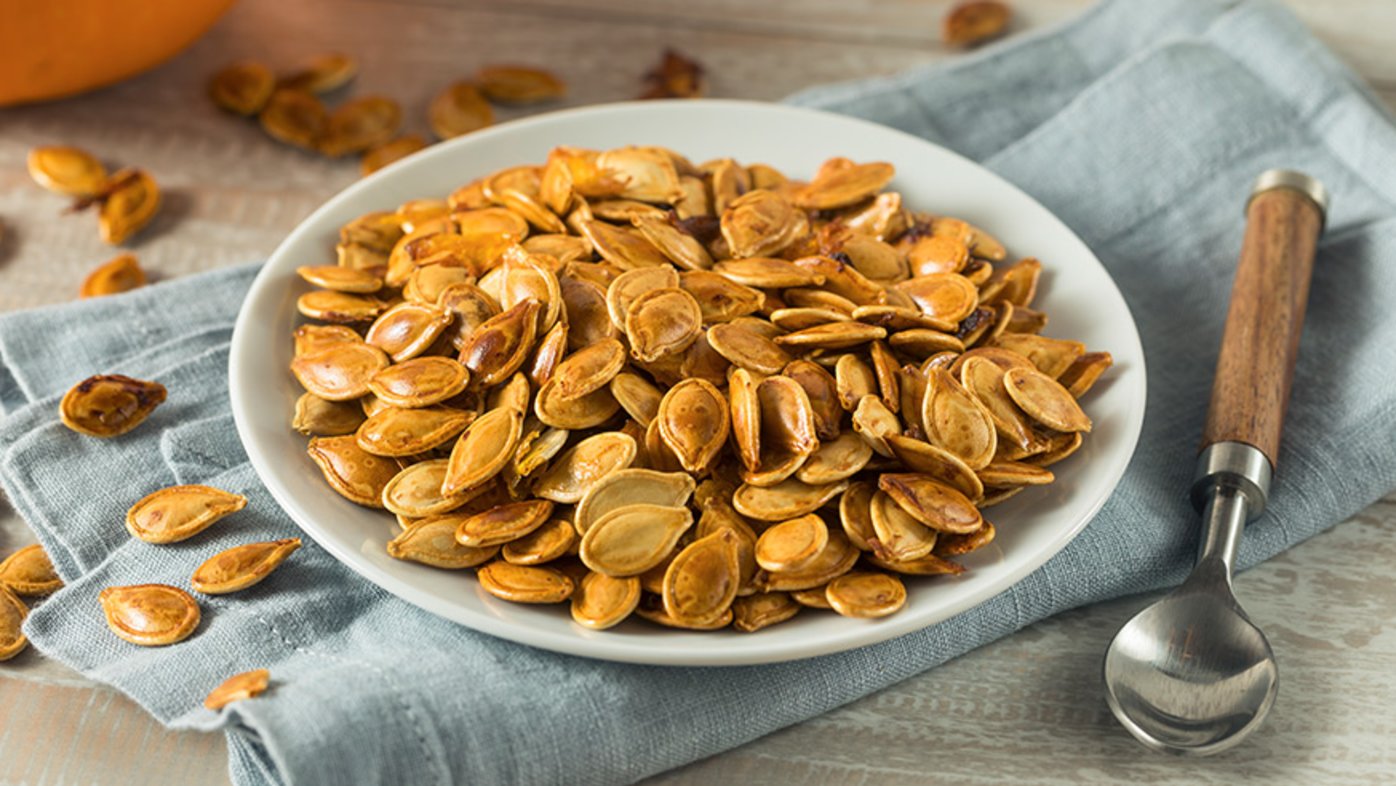
Health benefits of pumpkin seeds
Pumpkin seeds are loaded with the nutrients our bodies need.
If you’re trying to reduce your risk for cancer and other chronic diseases, maintain a healthy weight or improve your overall health, experts will tell you that eating a healthy diet is essential. However, while some basic guidelines around following a healthy diet are well known —limit or avoid fried foods, include lots of fruits and vegetables, aim for lean proteins — not everyone has a thorough grasp of what “healthy diet” actually means.
If you were to ask Michael Pollan, a journalist, author and professor who writes about food, where it comes from and how to ethically produce and consume it, he’d tell you: “Eat food. Not too much. Mostly plants.” However, Pollan recognizes this isn’t a lot to go on.
He wrote in the New York Times that this statement, likely his most famous, is a short answer to the “incredibly complicated and confusing question” of what we should eat. Among his other favorite rules for healthy eating:
If it came from a plant, eat it; if it was made in a plant, don’t.
Cook for yourself.
Do all your eating at a table, not at a desk, while working, watching television or driving.
Practice portion control.
Stop eating before you’re full.
He also shares that there is nothing wrong with desserts, treats and special occasion foods, “as long as every day is not a special occasion.” And if you enjoy a treat, he recommends you cook or prepare it yourself.
A simple guide to healthy eating
Recognizing that many Americans need more detailed information about what they should eat to support their health, the Centers for Disease Control and Prevention (CDC) provides additional guidance.
A healthy eating plan, the CDC reports:
Prioritizes fruits, vegetables, whole grains and fat-free or low-fat milk and milk products
Includes a variety of healthy protein sources, such as seafood, lean meats, poultry, eggs, beans, legumes, soy products, nuts and seeds
Is low in added sugars, sodium (salt), saturated fats, trans fats and cholesterol
Stays within a person’s daily calorie needs
The CDC also recommends creating a personalized plan for daily eating through MyPlate, a nutritional guide developed by the U.S. Department of Agriculture. MyPlate replaced the “food pyramid” of the 1990s and allows individuals to determine what and how much they should eat from each food group.
Each personal plan is based on an individual’s age, sex, height, weight and physical activity level. For example, according to the MyPlate Plan, a man, age 30, who weighs 160 pounds; is 5 foot, 10 inches tall; and gets about 30 to 60 minutes of moderate exercise each day, should consume about 2800 calories per day. His daily eating plan should include:
2 1/2 cups of fruit
3 ½ cups of vegetables
10 ounces of grains, such as bread, cereal, rice or pasta
7 ounces of protein, such as seafood, lean meat, chicken, egg, nuts or beans
3 cups of dairy, such as milk, yogurt or cheese
Alternately, a woman, age 30, who weighs 130 pounds; is 5 foot, 4 inches tall; and gets less than 30 minutes of activity each day, is advised to consume 1800 calories per day, including:
1 1/2 cups of fruit
2 ½ cups of vegetables
6 ounces of grains, such as bread, cereal, rice or pasta
5 ounces of protein, such as seafood, lean meat, chicken, egg, nuts or beans
3 cups of dairy, such as milk, yogurt or cheese
Eating too much — or too little — can affect your health
Including a variety of foods in your diet is essential to ensuring you get the nutrition your body needs. Every diet should consist of appropriate amounts of protein, fiber, carbohydrates, fats, vitamins, minerals and fluids.
Just as eating too much can lead to negative health effects, eating too little can be equally risky. Your body and brain need consistent nutrients and energy sources. When you don’t eat enough, you may experience serious health consequences.
Inadequate nutrition can lead to:
Malnutrition
Low energy levels
Hair loss
Infertility
Insomnia
Mood disorders
Trouble regulating body temperature
Poor cognition
Constipation
Frequent illness
Skin problems
Decreased bone health
Muscle loss
Physical activity is also important
Along with following a healthy diet, exercising regularly is essential. The U.S. Department of Health and Human Services recommends that adults get at least 150 minutes of moderate-intensity aerobic activity or 75 minutes of vigorous aerobic activity, or a combination of both, per week. Adults should also do muscle-strengthening activities at least two days per week and strive to spend less time sitting.
Experts also recommend the following additional ways to maintain your health:
Maintain a healthy weight
Manage stress
Get quality sleep
Avoid alcohol and substance use
Stay up to date on health screenings and vaccinations
Actively work with your doctor to manage your blood pressure, cholesterol and blood glucose levels
Talk with your doctor if you have concerns about your diet or overall health. And always consult your doctor before starting a new eating plan or exercise program.
Learn more about nutrition; get the latest health and wellness news, trends and patient stories from Sharp Health News and subscribe to our weekly newsletter by clicking the "Sign up" link below.
Our weekly email brings you the latest health tips, recipes and stories.